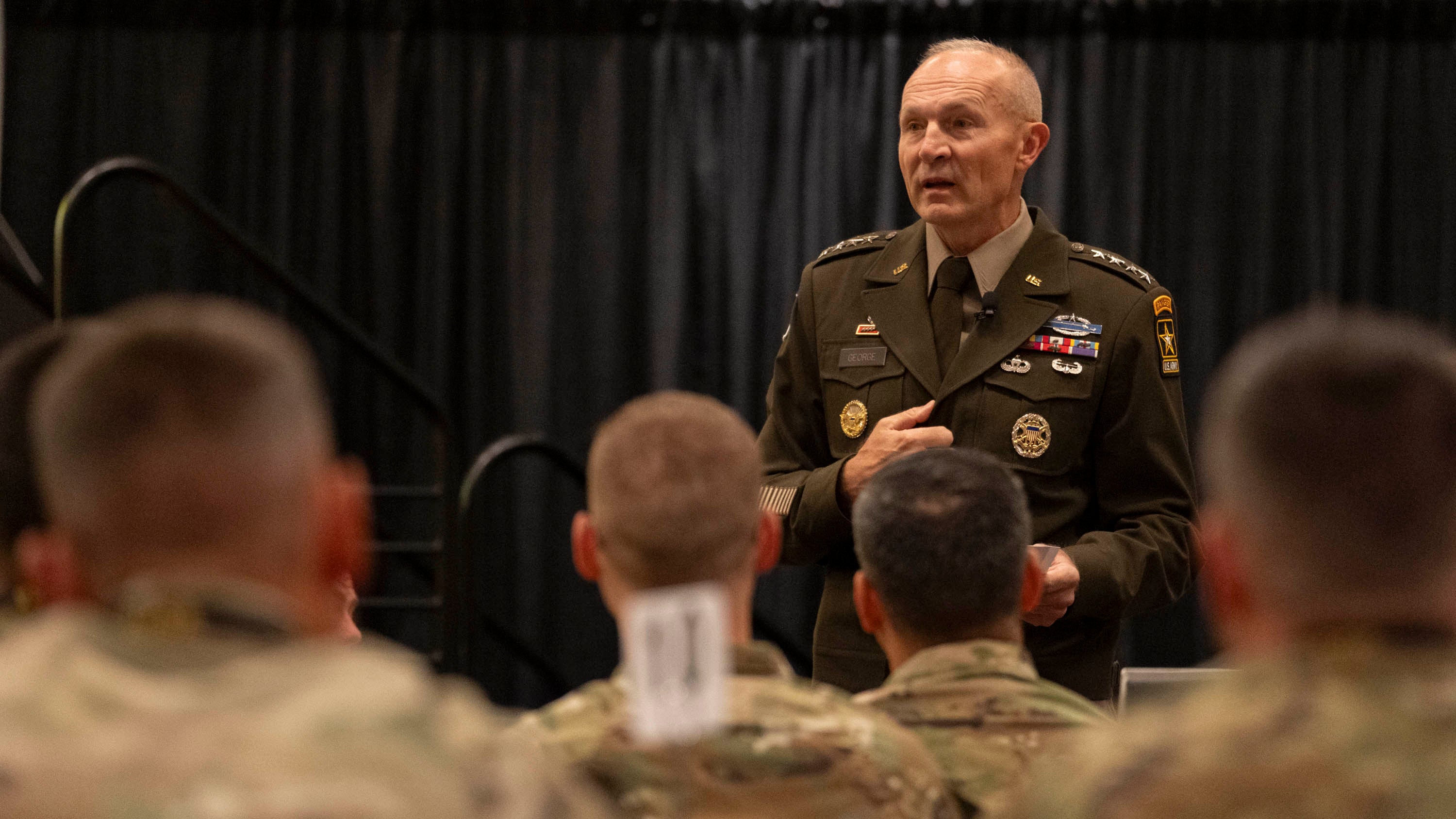Army Launches ‘Significant’ Recruiting Transformation
Army Launches ‘Significant’ Recruiting Transformation

The Army is professionalizing its recruiting force with a new MOS and an assessment process aimed at selecting the right people for the job, Army Chief of Staff Gen. Randy George said.
In remarks at a talent management forum at the Association of the U.S. Army’s 2023 Annual Meeting and Exposition in Washington, D.C., George outlined the coming transformation in Army recruiting, which will include a shift in how recruiters are identified and where they recruit.
Recruiters typically are selected from Army formations, but when he’s visited recruiting battalions, George said, “people would tell me, ‘Hey, I could tell almost immediately whether somebody had the skills to be a good recruiter.’ It’s a tough job to be able to sell those kinds of things.”
With the premise that recruiters will do better the longer they stay in one area, where they get to know the community, build cultural rapport and perhaps even speak a couple of languages, George said, people who qualify for the new MOS, 42T, will be selected much as soldiers are chosen to be in Special Forces.
“We’re going to go after selecting the right people … and then training them and keeping them so we’re not rotating them all the time,” George said, pointing out that the model is similar to the way the Army National Guard recruits. “They can continue to progress, but they’re going to be out there where they’re actually going to know the environment and be more effective.”
The move to professionalize the recruiting force is part of a larger effort to transform the Army’s recruiting enterprise. The moves come as the service missed its recruiting goal for the third consecutive year.
Maj. Gen. Johnny Davis, commander of Army Recruiting Command, said during the Oct. 9 discussion that the best ideas to boost the number of new recruits have come from recruiters. One of those is the Future Soldier Preparatory Course, a program run at Fort Jackson, South Carolina, and Fort Moore, Georgia, that helps new recruits improve their test scores and get into better physical shape.
“Everything we’ve done in this command is really the feedback from these recruiters,” Davis said. “It has allowed us to move resources and invest in their needs. When the recruiting force sees that, there’s this surge of energy to get out there and do more.”
The need to professionalize the recruiting force was evident to Lt. Gen. Douglas Stitt, deputy Army chief of staff for personnel, G-1, as he walked the halls of the AUSA annual meeting.
“When you walk around the halls here, you see all of this great kit that’s in the hands of our warfighters,” Stitt said. The overhaul of the recruiting enterprise “is the most significant transformation that’s happened within [Recruiting Command]. Well, we want the best kit in our soldiers’ hands to do any mission that they’re given. Recruiting Command is no different.”
Stitt pointed out that the training a young sergeant receives to be a recruiter “is shorter than everything except for two military occupational specialties within the United States Army.”
To modernize and “upskill” the recruiting force, he said, “we want to make this a career for a recruiter” while maintaining the value of a clear career path with opportunities for leadership positions and authority within the organization.
It will require setting the conditions to catch up with a 21st century labor market and developing Recruiting Command into a “resilient organization that is able to withstand economic or geopolitical impacts on the labor market.”
— Gina Cavallaro

